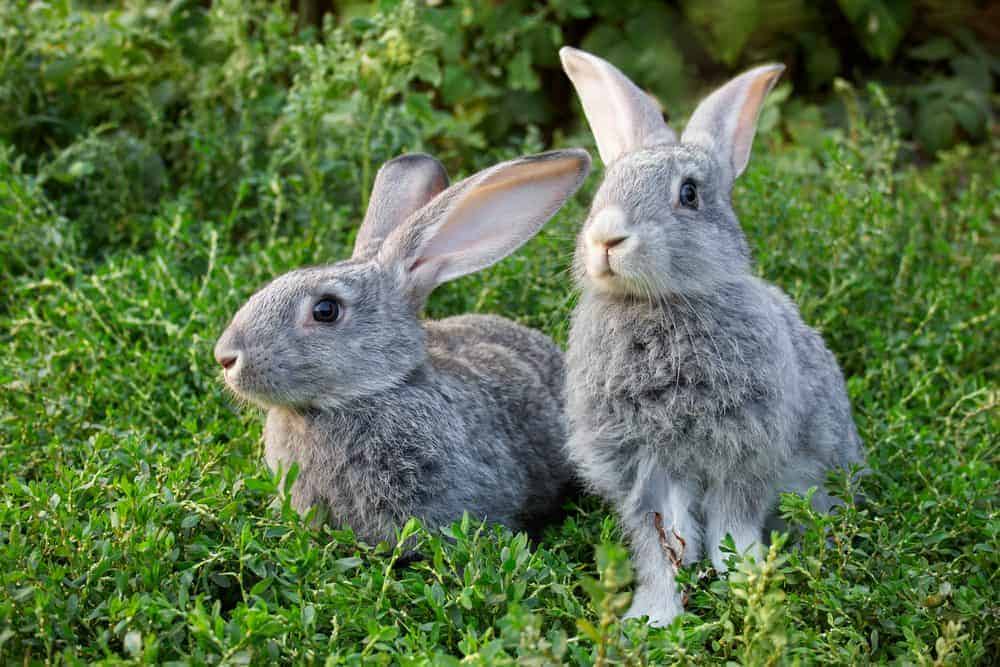
Rabbits are active creatures who need the opportunity to run, jump and hop about every day. Without adequate exercise, the skeletal frame of a pet rabbit suffers and they could become prone to obesity. Being overweight can cause all sorts of problems for bunnies, including loss of muscle tone, breathing problems, difficulty moving around and malnutrition. That’s why pet rabbits need a helping hand from their human to stay in shape.
For your pet rabbits to be happy and active they require:
- An exciting space where they can hop, run, jump, explore and forage and do all the things that come naturally to bunnies.
- Constant access to safe hiding places where they can escape if they feel afraid, as well as platforms from which they can scan their environment for threats.
- Things to do – tunnels to run through, toys to investigate and play with and plenty of fresh grass and feeding hay to graze on.
A hutch is just for sleeping in
Rabbits need constant access to a spacious and safe exercise area. Their hutch should just be seen as their ‘burrow’ – the place that they sleep in. The Rabbit Welfare Association and Fund recommends a large hutch or shed with an exercise run permanently attached, so that your bunnies can choose when they want to shelter, and when to play. Rabbits are ‘crepuscular’, which means they are most active at dawn and dusk. So, taking them out of their accommodation to run about for a few hours in the daytime doesn’t really suit their natural body clocks and instincts.
Keep your bunnies safe
Rabbits whose exercise run is on a lawn will enjoy access to grass every day, which is great for their teeth and digestive systems and will keep them busy. However, it’s essential that you take precautions or these little Houdinis are likely to dig their way out, putting themselves at risk of predators. Either set paving slabs around the perimeters to make tunnelling out more difficult or look into anti-dig kits that comprise mesh skirting tucked under the perimeter of the enclosure. Protect part of the run from extremes of weather with a cover such as tarpaulin to act as a shield from rain or hot sun.
For a five-star bunny exercise set-up, you can even buy specially designed kits such as Runaround. This is a connective rabbit run system that can attach any hutch to any run via a door and burrow pipe, which safely transports your pets out of their hutch and into the run. You can add on tunnels to increase the distance your pets can travel – or go for a complete overland warren with den pipe digs, hutches and top boxes.
Help your rabbits to act naturally
The exercise run should enable your bunnies to display all of their key natural behaviours: running, digging, burrowing, jumping, hiding, foraging and grazing. Rabbits with enclosures on concrete, slabs or decking will require a digging pit, which could be a large litter tray or planter filled with earth. Also provide a hayrack to give them access to hay that hasn’t got wet from the ground, which will also encourage them to stretch up.
Tunnels, available from pet shops, will act as substitute burrows and encourage your rabbits to be more active. Cardboard boxes filled with hay with entrance and exit holes cut out are fun to jump in and out of – and provide a good place to hide if your bunnies are scared by something.
Toys such as willow balls stuffed with long stem feeding hay will add enrichment and extra exercise opportunities. It’s also a good idea to have a range of rabbit-friendly toys and give your buns different ones to play with each week to keep life interesting for these inquisitive, intelligent animals.
Encourage foraging behaviours by scattering some of their daily rabbit pellets ration in clumps of hay around their enclosure. Alternating different hay mixes such as tasty Dandelion and Marigold or calming Chamomile will keep things interesting – as will occasional treats such as Excel Gnaw Sticks.
Pals to play with
In the wild, rabbits live in large groups, so one rabbit on its own will become lonely and stressed. The best option is to keep a compatible pair or group as their daily interactions will keep them busy and active – and it’s much more fun to have a chum or two to play with. Introducing a new bunny needs to be done very carefully – we’ve some helpful advice here >>
Great nutrition for happy active bunnies
Did you know that Burgess Excel has a complete range of food for rabbits? From Adult, to Junior and Dwarf to Mature, along with a Light version and a variety specially developed for Indoor Rabbits, you can check out our rabbit menu selection here >>
If you found this interesting, you may also like:
Happy bunnies? Find out exactly what your rabbits need to be contented cottontails
How to handle your rabbits The way you pick up your rabbits has a direct impact on their welfare, according to latest research. Our in-house vet Dr Suzanne Moyes explains the right ways to handle your rabbits with care
Bunny talk Rabbits are highly social animals with a complex language all of their own. By learning to understand their body postures, behaviours and vocalisations, you’ll uncover their individual personalities
Bonding with your small pets Hand-feeding is a great way to build a closer bond with small animals. It takes time to build trust, but when your little friend finally feels confident enough to take a treat from your hand, it’s a special moment
Sources: rabbitwelfare.co.uk, pdsa.org.uk, rspca.org.uk, bluecross.org.uk














